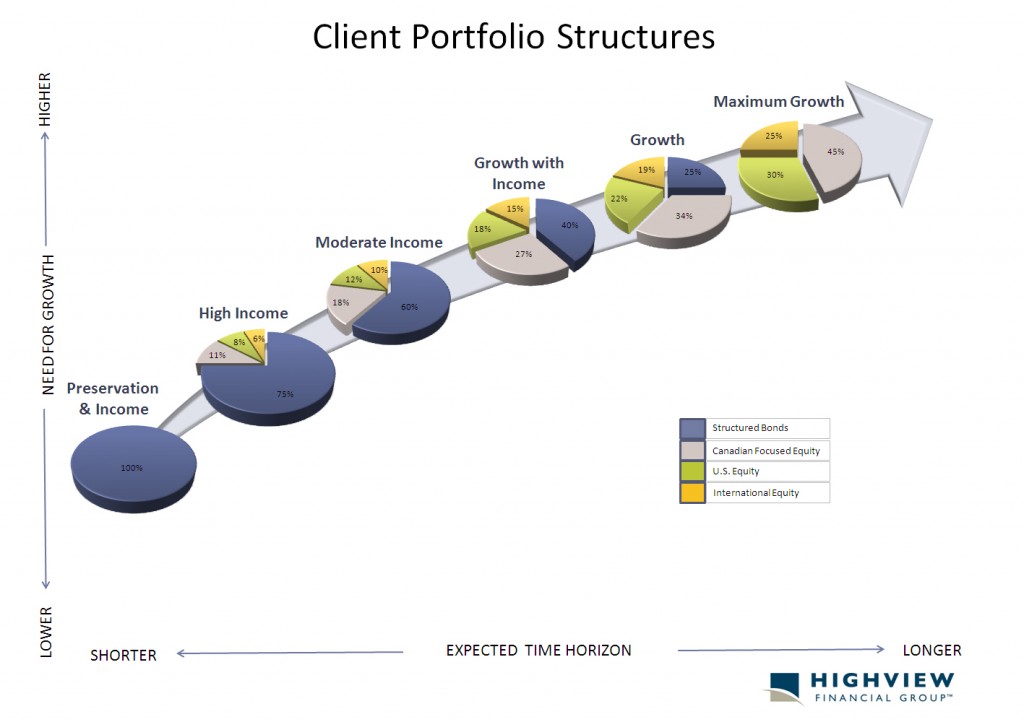By HighView Financial on November 10, 2011
Overview:
For years now, my close friends & family have always joked that I could easily be the all-time winner of the reality show, Canada’s Worst Handyman. I love building businesses but building furniture and repairing things around the house is a task that I prefer to outsource to people who are skilled in that area.
This analogy, though, can also be applied to the two investment approaches for Capital Accumulation Plans (ie: Group RSPs, DPSPs, DC Pension Plans), which I refer to as the IKEA Approach and the Leon’s Approach. Let me explain below.
The IKEA Approach:
Everyone is familiar with the IKEA approach — you buy your furniture (say, a bedroom suite), take it home and assemble it yourself with a limited set of tools – typically an Allen Key! This is the same approach primarily used by the large Financial Institutions such as Insurance Companies & Banks when it comes to portfolio construction in group retirement plans.
The view of these organizations is that Canadian investors are seeking a large range of investment choices for their group retirement plans. Nowadays, this ‘choice’ can have literally hundreds of investment options available typically through mutual/investment funds. I saw one plan recently from a Canadian Financial Institution that had 300+ investment fund choices.
With the IKEA Approach to group retirement plans, though, employees are provided with:
– A ‘box of portfolio parts’ – ie: Canadian Equity Funds, Canadian Bond Funds, Global Equity Funds, Mortgage Funds, etc. — the list is almost endless with more than 5,500 mutual funds available in Canada today……
– A limited set of tools with which to construct their portfolios, and……
– Often times, the box doesn’t even contain an ‘instruction manual‘ on how to build a portfolio that helps employees meet their investment objectives while respecting their true tolerances for risk.
As a result, many employees – given that they’re not trained in designing portfolios – often select combinations of investment funds based upon historical returns (without recognizing the underlying risks), or are often times simply overwhelmed by the range of choice and just simply sit in the plan’s default investment option……which is often times just a short-term cash investment vehicle that pays interest rates similar to a chequing account.
I’m a big supporter of choice but the challenge with investment management is that these ‘choices‘ need to be combined into effective portfolio structures for employees that not only help them reach their retirement goals BUT also have a behaviour (ie: the market value ups-and-downs) that speaks to their unique tolerances for risk.
Being Canada’s Worst Handyman, I know how frustrated I get when I’m trying to assemble IKEA furnitue and I sense the same frustration when I receive weekend calls from friends & family members asking what investment choices they should select within their group retirement plans.
The Leon’s Approach:
With the Leon’s approach, you buy the furniture that is appropriate for you but it’s fully assembled…….your bedroom suite doesn’t come in a series of boxes comprised of 5,000 pieces of wood, screws, hinges & washers. This is the approach that an increasing number of investment organizations, such as HighView, use with their group retirement plan clients.
In these types of plans, employees are guided to help select a ‘portfolio structure’ that contains a fully researched combination of investment funds according to various asset classes – such as stocks & bonds – that are tailored to each employee’s retirement objectives and risk tolerance. As a result, employees don’t have to construct their own portfolios from an endless array of investment choices, they are selecting an overall portfolio structure (ie: a combination of investment funds) that are tailored to their unique needs and managed (ie: investment funds/managers monitored and replaced if required). An example of such portfolio structures are listed below.

What Should Plan Sponsors Do?
We believe that sponsors need to decide what type of investment approach has the best likelihood of helping their employees reach their retirement goals. After all, this is what being a fiduciary/plan sponsor is all about.
In Canada, it’s becoming clear that we have a looming retirement crisis. As a result, our view at HighView is that what employees need more help with is ‘constructing portfolios’ that are designed to meet their retirement goals while respecting their tolerance for risk & portfolio volatility instead of an even greater line-up of ‘portfolio parts’.
Like so many things in the wealth management industry today, there’s a massive proliferation of product available within Group Retirement Plans but the important questions go unanswered:
- Employer Question: Are we doing the right thing? ie: Are we truly meeting our responsibilities in helping employees in my firm progress towards their retirement goals?
- Employee Question: Will I be OK? ie: How will my company’s plan contribute to my overall retirement plan in meeting my retirement income needs?
- Understanding Wealth Stewardship - August 4, 2022
- Reaching a Successful Transition of Family Wealth - May 12, 2022
- The Obstacles in Creating Sustainable Wealth - April 7, 2022




